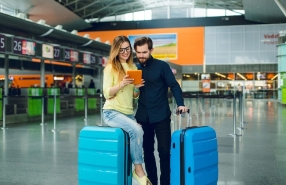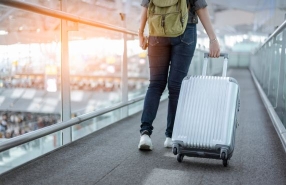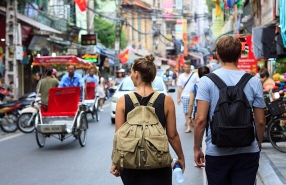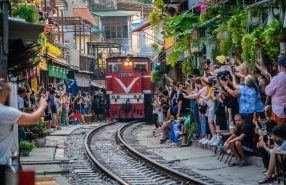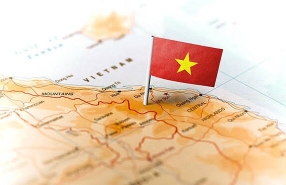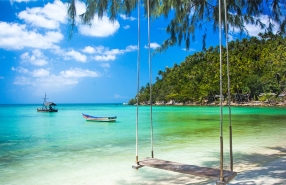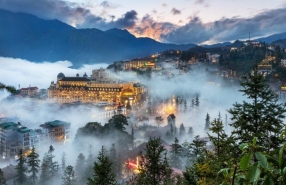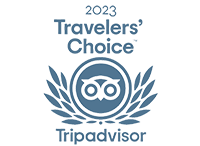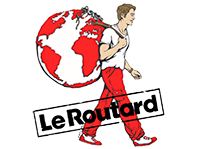How To Get Around In Cambodia ?

Cambodia, land of majestic temples, floating villages and tropical landscapes, attracts travelers in search of authenticity and culture. Whether it's the marvellous ruins of Angkor, the peaceful banks of the Mekong, the pristine beaches of Koh Rong, or some other unsuspected treasure, it's important to know how to get around. So how to get around in Cambodia ? From the most modest public transport to the most comfortable private services, there's no shortage of ways to get around in Cambodia, depending on your travel style, budget and itinerary. Here are a few practical tips and recommendations from our Cambodia travel agency, Autour Asia, for traveling with peace of mind across Khmer soil, where many provinces aren't as central and don't offer these travel applications where it's important to know how to get around without getting ripped off.
Table of Contents
I. Exploring Cambodia by public transport
1. By plane
Cambodia isn’t that big, but flying is still your best way to get from one tourist hub to another. This is no doubt due to a shortage of leisure time as it is partly also about all the hours that are wasted on the country’s terrible roads. As an aside, if you’re asking how to get around in Cambodia, know that the domestic airline in Cambodia, Anshor Air, offers several daily Cambodia internal flights to the country’s most popular spots: Phnom Penh, Siem Reap, as well as Sihanoukville. For instance, flying from Phnom Penh to Siem Reap takes 50 minutes compared to a 6-7 hour drive by car or bus. Thanks to that bus the rout Siem Reap – Sihanoukville may now take more than 10 hours. There are always good seats and air conditioning on board.
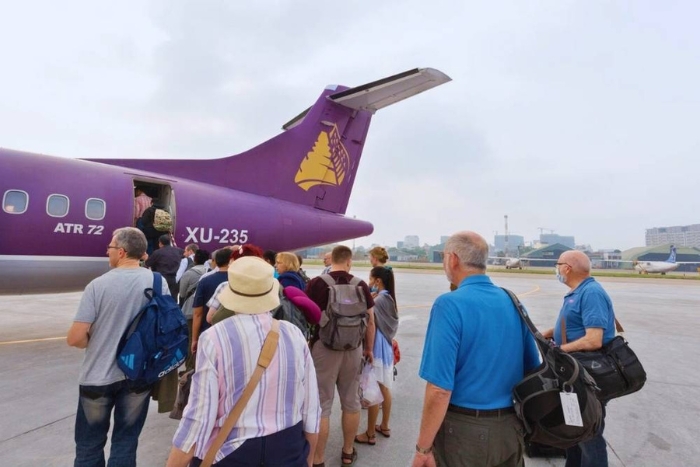
In fact, very few cities have their own airport - Phnom Penh, Siem Reap and Sihanoukville, for example - which should immediately establish typical tourist routes. The fact is, air travel is the optimal means of transport in Cambodia. Thanks to this, you'll save precious time even if you've never left the country for a few days. For example, the paradisiacal southern seaside resort, the bustling capital of Phnom Penh and a visit to the film-set temples of Angkor will take you just a few days each way. This is especially true for domestic flights, which are also very short, comfortable and frequent. Pre-book flights in advance to get an acceptable price - especially on high-season or holiday return routes.
2. By train
It's not possible to say that the train is the fastest means of transport. Nevertheless, by train is one of the most local and interesting options for the more curious traveler in Cambodia. It's also an expensive way to travel, as Cambodia's rail network is extremely limited. There is just one railroad line linking the country's capital, Phnom Penh, to Sihanoukville via Takeo and Kampot. The eight-hour journey should cost around €7 and is the cheapest option to see the country outside of the bus for visitors. The carriages and trains are generally not very special, but remain clean and include a comfortable seat and air-conditioning in a few cases. To get around Cambodia, the train runs optically slow, making it an interesting way to see Cambodia's rice fields and people.

Although people don't use trains much in Cambodia, the sections they cover offer a wonderful, silent and authentic travel experience. What's more, they move extremely slowly, allowing you to see rural villages with locals coming and going from the rice paddies. They’re also good for anyone looking to visit places which are somewhat less remote. And some of the more remote rural areas are among the comfortable and cheapest to explore by train. If you’re trying to figure out how to get around in Cambodia, this is definitely a good choice !
3. By bus
Buses are the most affordable and widely used means of transport in Cambodia. Although the decline of the local system is more violent than in neighboring countries, there are a good number of reliable companies linking Phnom Penh, Siem Reap, Sihanoukville, Kampot, Battambang and the border. The cost varies from €7 to €14, depending on the quality and type of bus and the company. It costs €10 to take the direct bus from Sihanoukville to Phnom Penh, the company being international.
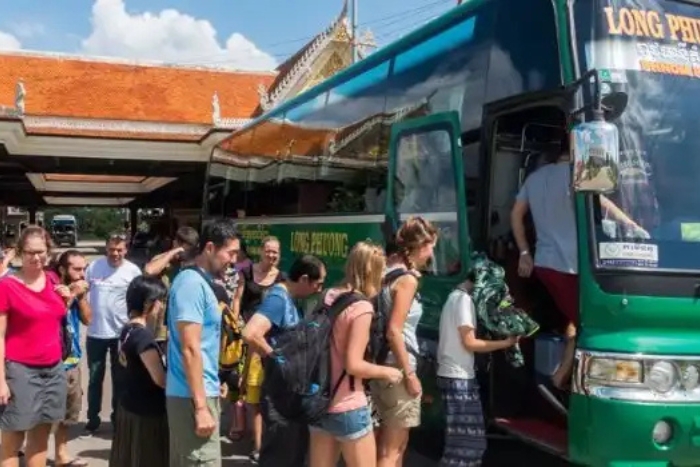
Cambodia's bus transport system is distinguished by its diversity of offerings, ranging from very inexpensive local minibuses to international companies offering modern vehicles. Among the most reputable are Giant Ibis, Mekong Express, Virak Buntham and Larryta Express, which cater mainly to foreign travelers, with services in English, a good timetable and a certain level of comfort on board (snacks, bottled water, reclining seats...). For budget travelers who are wondering how to get around in Cambodia for less, local buses are still the cheapest way to get around in Cambodia, although you’ll find them to be less comfortable because of countless stops and generally slower speeds as well as possible delays. But they do put you in direct contact with the local people and some great immersion.
4. By boat
A boat ride here isn’t just a way to get around — it’s an opportunity to fully engage with the destination. Be it the Tonle Sap or its tributaries, or the few kilometers of the Mekong the country shares with its two neighbors, this is a different view of the nation. If you want a special experience when travelling around Cambodia definitely consider this river. The same journey in Cambodia, Phnom Penh to Siem Reap will take roughly 6 hours and set you back €32. It’s also a nice respite away from the maddening crowds, if you will.
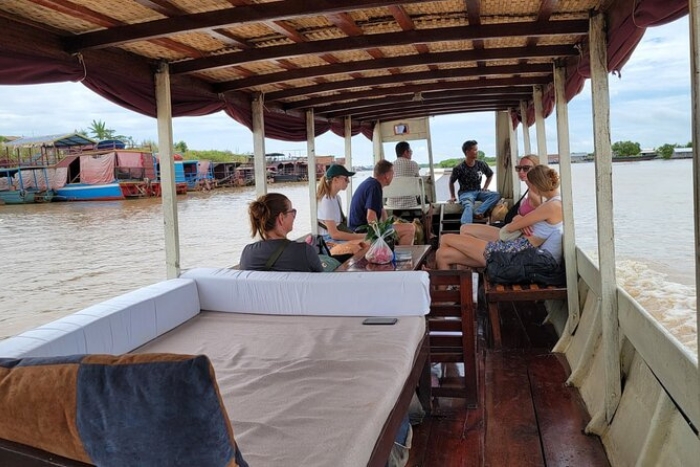
This river journey takes you deep into the day-to-day life of Cambodia, with its floating village, fishermen net casting, children waving from the banks. On the ship, a special field is visible over the country, such as waterfowl, and sometimes you can admire the refreshingness of a packed lunch to eat a piece of tropical fruit. Although the boat is arguably the least convenient means of transport in Cambodia and gets far less use than buses or flights, it is also a once in a lifetime kind of experience for lovers of photography, nature, and slow travel.
II. Travelling in Cambodia by private transport
1. By tuk-tuks
For a start, one of the top answers to how to get around in Cambodia is via tuk-tuk. These little motorized things are good for four, and they're definitely the way to travel: safe, comfortable, and local. City excursions by tuk-tuk should cost between €2 and €5, provided you negotiate the fare in advance, especially if you flag down a tuk-tuk off the street.
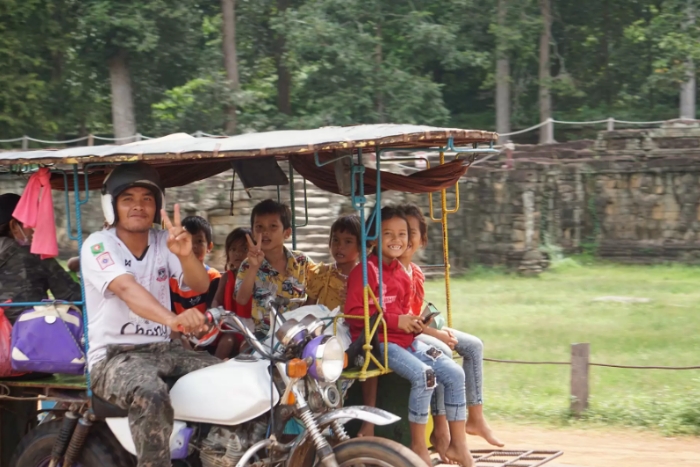
In recent years, modern metered tuk-tuks have appeared, similar to enclosed tricycles, which are more stable and quieter. For even greater convenience, local apps allow you to order a tuk-tuk directly via smartphone, often at a rate €2 to €3 cheaper than those negotiated by hand. Ideal if you're not familiar with the city or don't speak Khmer ! Day or night, the tuk-tuk remains a friendly, economical and typical solution for getting around Cambodia.
2. By moto-dops (Cambodian motorcycle taxis)
In Cambodia, moto-dops — that is, scooters or motorcycles with a driver — are everywhere. They are one of the fastest, most economical, and most practical means of transport for short distances, and also offer an authentic travel experience. Sometimes a helmet is provided. If you're wondering how to get around Cambodia, this is by far one of the cheapest and most characteristic options.
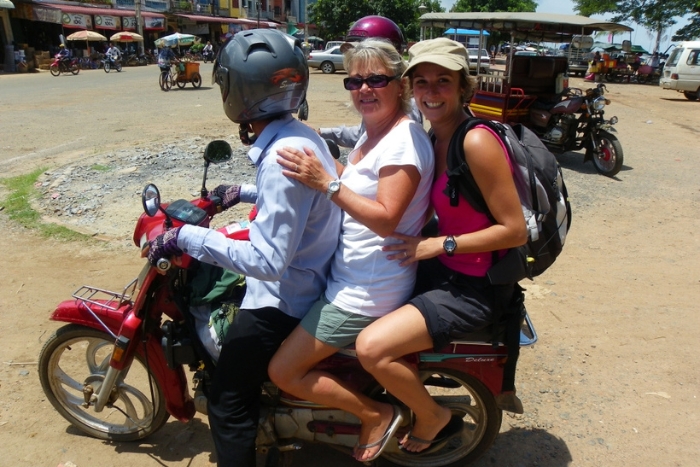
An average fare for a moto-dop is about €2 – less if you don’t travel far and use your charm at the negotiating table. This mode of transportation is highly coveted for its flexibility: you can avoid traffic, take the back roads and get there faster. When you want to feel the city at breakneck speed, and you're traveling light, the moto-dop is a great way to get around Cambodia. Some drivers can also be booked using mobile apps, with rates agreed in advance. Thrills guaranteed !
3. By taxis
Taxis provide another option to get around in Cambodia and would offer some comfort and ease for longer distances or for groups. Types range from a regular saloon car to a pick-up, which is also bigger than the former and more practical in case you intend to carry lots of luggage. Compared with tuk-tuks or moto-dopps, cars are much safer and more comfortable, also providing air conditioning and sufficient privacy for families or travelers wanting more comfort.

Rates depend on distance, duration and vehicle. For example, it costs around €45 from Phnom Penh to Sihanoukville. It's possible to discuss prices directly with drivers on the street, but with mobile apps like Grab, things are much more transparent. These apps help you easily order a car in five minutes, and you can see the estimated price in advance and not worry that your driver will need a lot of money for that errand. When it comes to transportation in Cambodia, cabs are also a reliable option to return after dinner, especially when other means are unavailable or less safe.
4. By private cars
For those who wish for more freedom, wandering to Cambodia without overdoing it, would love to hire one private car of a driver or take a private cab for a full day. When it comes to getting around in Cambodia, whether you are traveling to Angkor’s temples, Kampot’s beaches or the hills of Mondulkiri, you fly by your own itinerary, step off where you desire and don’t have to check any schedules at all. And who knows, the driver is probably a local, so even a guide — they may be able to tell you more about the city where you arrive or even show you the place you never thought you’d see.
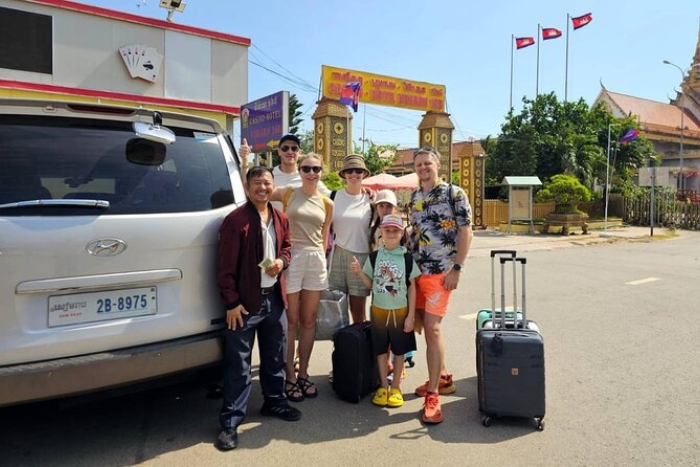
Prices depend on distance, duration and sort of car, but you should budget €55 to €73 per day for a car with a driver. This reception is usually provided by local agencies and can also be booked via such online platforms as Autour Asia, giving access to all-inclusive products and English-speaking customer service. A fantastic option for anyone interested in how to get around in Cambodia easily with family, or a group of friends, without stressb! It’s also a perfect option for those who want to see as much of the country as possible without stressing about driving or the state of the Cambodian roads.
III. Practicals tips for choosing the right mode of transport
1. Some apps for booking adapted transport in Cambodia
Apps that have made booking tuk-tuks, taxis, and private cars incredibly practical and popular, particularly for getting around in daily life, for both residents and visitors of Cambodia. Below are the top apps in the country for those asking how to get around in Cambodia:
- Passapp: The local fave, a must have app for Phnom Penh and Siem Reap, good for ordering a regular tuk tuk or a metered cab. But it is reasonably priced — a short trip will cost you about €2 to €3.
- Grab: Also present in Cambodia, this Southeast Asian app offers tuk-tuks, private cars and delivery services. Rates generally start at around €1 for short trips.
- Camgo: A fast-growing Cambodian app that makes booking tuk-tuks and cars easy. It's appreciated for its simple interface and competitive prices (€1 to €3 depending on distance).
- Tada: Known for taking no commission from drivers, Tada offers tuk-tuks and private car services at attractive prices (around €1 to €3).
- LM Car: Specializing in modern, comfortable cars, this app is suited to customers looking for a more upscale service, with trips starting at €3.50.
Note: Most of these applications accept cash payment. However, some are gradually integrating electronic payment options (such as cards or mobile wallets).
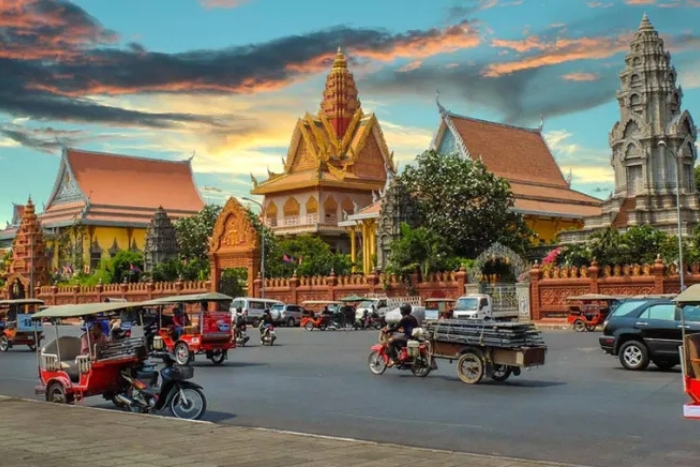
In certain provinces of Cambodia where booking applications are not yet available, travel is still possible thanks to several traditional and accessible means:
- Classic tuk-tuk: Usually operates within a city, near markets, bus stations and tourist sites. They seat 2 to 4 people and are open and favored by travelers.
- Moto-dop (moto-taxi): For short distances or if you are travelling alone. Drivers often hover around public locations.
- Private car with driver: Available through hotels, homestays or local agencies. Recommended for day trips or longer journeys.
- Minivan (shared car): Widely used for inter-provincial journeys. Some companies offer a tuk-tuk pick-up service from your accommodation. Reservations recommended through your hotel or reliable agencies.
- Bus: Economical and safe option for long distances. Less flexible, but suitable for fixed routes. Tickets available from bus stations or local retailers.
Tips: To better understand how to get around in Cambodia, download an offline map (like Google Maps), keep a photo of your accommodation address, and ask your hotel or guesthouse for help in case of a language barrier when booking local transportation.
2. Tips for choosing the right mode of transport to get around Cambodia
Getting around Cambodia is easy, so long as you are prepared and know how to take care of yourself. Here are some helpful hints so you can choose the most suitable means of transportation and avoid the unexpected:
- Around town for short distances: If both cheap and convenient ways to get around are your thing, try tuk-tuk or moto-dop.
- Over longer distances: Best take a minivan or interprovincial bus from some reputable company.
- For a more comfortable, safer ride: book a private chauffeur-driven car through your hotel or a reputable agency.
- Always ask the price upfront and haggle with manners in order not to be overcharged or experience abusive quotes.
- In major cities like Phnom Penh, or Siem Reap: use good apps like Grab, PassApp or Tada, which tend to be more transparent on pricing.
Note: To avoid scams during your trip to Cambodia, here are a few precautions to take.
- Never pay for the entire trip in advance, especially with independent drivers. Pay at the end, unless the application asks you to pay online.
- Carry the address of your accommodation in Khmer, or a photo of the map, to facilitate communication.
- If you don't speak Khmer, ask your hotel or homestay to call a trusted driver or negotiate the fare for you.
- Avoid following strangers who present themselves as drivers or guides without clear proof.
- Beware of drivers or guides who are “too insistent”, especially when leaving bus stations or tourist sites: it's better to refuse politely.
- Use reliable booking applications such as Grab, PassApp, Tada, CamGo, where fares are transparent and journeys traceable.
- Be careful with your personal belongings during the journey, especially in a tuk-tuk or on a motorcycle: keep your bag close to you and close it properly.
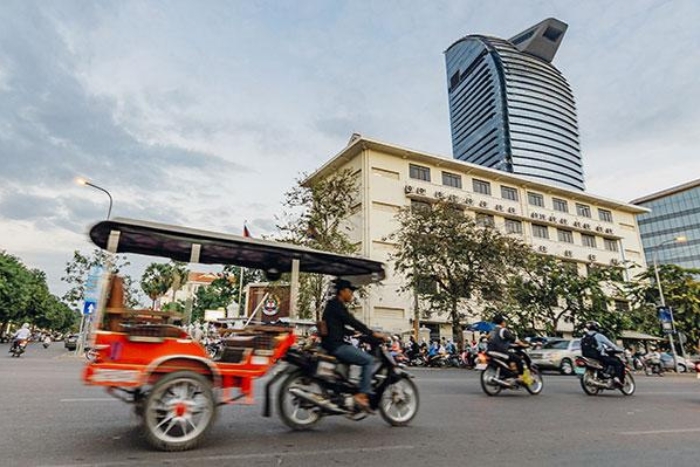
So there you go, Cambodia transport includes many modes to cater for all travellers. Whether you prefer a traditional tuk-tuk to ride in local style, a motorcycle for more freedom, or a minivan for cross-province trips, there’s a form of transportation that best fits your needs. Whether traveling around the country to explore its culture, taste a variety of landscapes, from the grandiose temples to the rice fields, small villages really. If you also want to know how to get around in Cambodia in a practical and carefree way, do not hesitate to contact the team of Autour Asia who will help you plan your trips.
It is advisable to refer to:
- 9 days in Cambodia
- Cambodia Travel Guide
- Cambodia Tours Itinerary 2 weeks
- Cambodia Tours
The best itinerary for 2 weeks in Cambodia combines ancient wonders, cultural heritage, and natural beauty. Begin your journey in Siem Reap with the iconic Angkor Wat and the surrounding temple complexes, then explore the floating villages on Tonle Sap Lake. Travel to Phnom Penh to visit the Royal Palace and the Tuol Sleng Genocide Museum, gaining insight into the country’s history. Continue your 2 weeks in Cambodia with stops in Kampong Cham for its French colonial charm, and Kratie to observe the rare Irrawaddy dolphins along the Mekong River. Venture north to Stung Treng and enjoy a unique community-based ecotourism experience in Koh Han. Discover the remote and majestic Preah Vihear Temple nestled in the Dangrek Mountains. Head to Battambang for its rural atmosphere, stilt houses, and bamboo train ride. Finally, unwind on the beautiful beaches of Sihanoukville and the peaceful island paradise of Koh Rong Sanloem.
Wondering what to do in 7 days in Cambodia ? This itinerary lets you discover the country’s essentials. Start in Siem Reap with a cultural immersion and the must-see Angkor temples. The next day, explore Tonlé Sap Lake and its floating villages. Continue to Battambang for an authentic and artistic touch before heading to Phnom Penh, the vibrant capital, where you'll dive into the country's history through royal palaces, local markets, and sites of memory. A rich and varied week, perfect for a first discovery of Cambodia !
The best time to visit Cambodia is from November to March, during the dry season. The weather is sunny, temperatures are pleasant (between 25 and 30°C), and the humidity is more bearable, making sightseeing and transportation in Cambodia more comfortable. It is also the ideal time to discover the temples of Angkor, enjoy the beaches of Sihanoukville, or explore the floating villages of Tonlé Sap without worrying about heavy rain. On the other hand, the rainy season (May to October) can offer lush landscapes and fewer tourists, but some roads may become difficult to access.
Related travel guide
Other similar articles
CUSTOMIZABLE BY LOCAL EXPERTS
Personalized trip at the original price!
REFUND GUARANTEE
We believe in our work and promise to give you money back.
GOOD PRICE / QUALITY
95% satisfied more than expected!
24/7 LOCAL SUPPORT
We are always available online to provide assistance at any time.
Most read articles
Autour Asia is highly recommended on
Embracing the mission of "Satisfied more than expected" and providing authentic experiences, we have received numerous recommendations on reputable travel forums:











